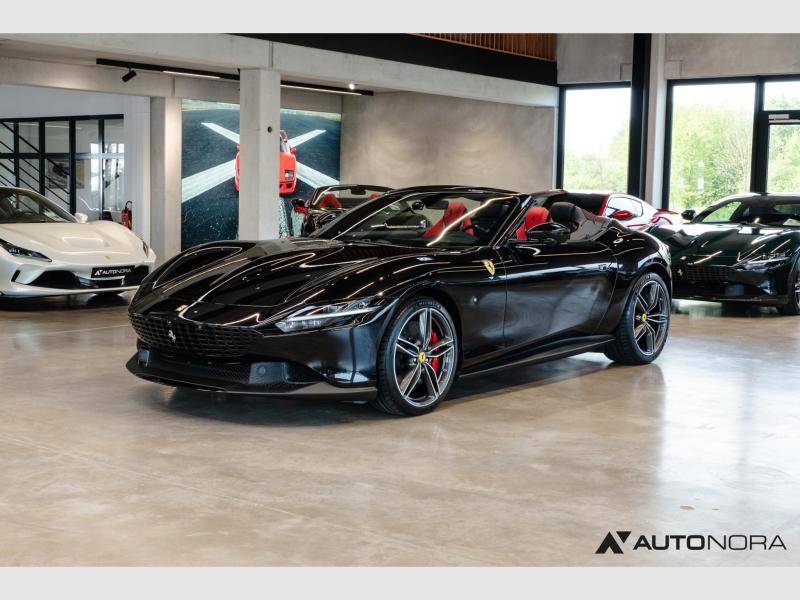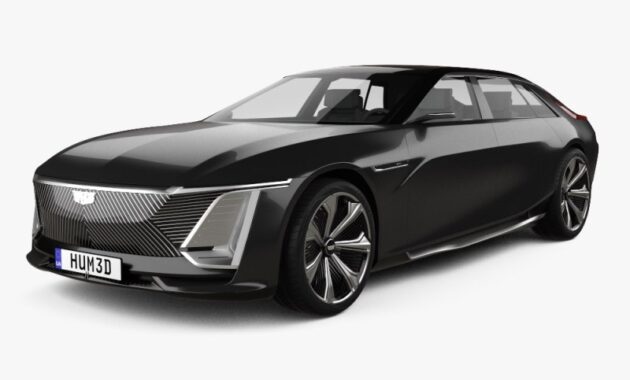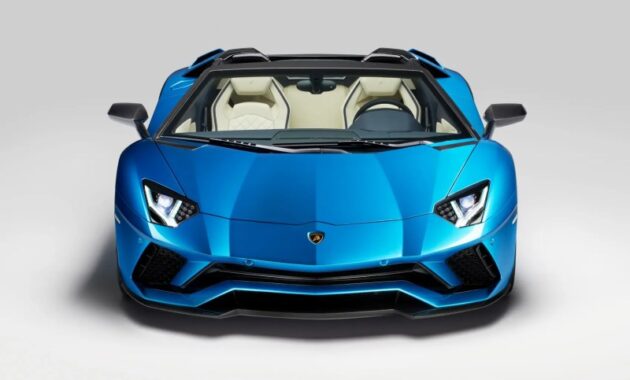Ferrari Roma Spider – The Roma Spider is a very stylish, high-performance car, but also lives up to the modern Italian lifestyle of the 1950s and 60s. This Spider carries the proportions, size and specifications of the highly successful Roma concept, but what makes it so impressive is the soft top reception, a solution that favors the return of the field’s 54-year-old front-engined car. After the 1969 365 GTS4 was launched
The fuel consumption and CO2 emission values are determined in accordance with European Regulation (EC) 715/2007 in the version applicable at the time of type approval. Fuel consumption and CO2 emission figures refer to the WLTP cycle.
Ferrari Roma Spider
Before entering the market, passenger cars undergo a series of tests to ensure they meet the regulations.
Ferrari Roma Spider Is Here And It Has A Soft Top
Tests to evaluate fuel consumption, CO2 and pollutants are conducted in a laboratory and are based on a specific driving cycle. In this way, the tests can be repeated and the results can be compared. This is important because laboratory testing using a standardized and repeatable procedure allows users to compare different car models. On September 1, 2017, the Worldwide Harmonized Light Vehicle Test Procedure (WLTP) entered into force in Europe and will gradually replace the New European Driving Cycle (NEDC) protocol. NEDC (New European Driving Cycle): this is the European driving cycle currently used to measure the fuel consumption and emissions of passenger cars and light commercial vehicles. The first European driving cycle came into force in 1970 and focused on urban routes. In 1992 it was also considered a non-urban phase and since 1997 it has been used to measure CO2 consumption and emissions. However, the composition of this cycle is not compatible with the current driving style and distances traveled on different roads. NEDC average speed is 34 km/h, acceleration is low and top speed is 120 km/h. WLTP procedure: WLTP uses the new Globally Harmonized Light Vehicle Test Cycles (WLTC) to measure the fuel consumption and pollutant emissions of passenger cars and light commercial vehicles. The purpose of the new protocol is to provide customers with realistic data that better reflects the daily use of the vehicle. The new WLTP procedure is characterized by a dynamic driving profile with more significant acceleration. The maximum speed increases from 120 to 131.3 km/h, and the average speed is 46.5 km/h. Total cycling time is 30 minutes, 10 minutes more than the previous NEDC. The distance was doubled from 11 to 23.25 km. The WLTP test consists of four parts depending on the maximum speed: Low (56.5 km/h), Medium (76.6 km/h), High (97.4 km/h), Extra High (up to 131.3) km/h ). These parts of the cycle simulate urban and suburban driving and driving on suburban roads and highways. The procedure also takes into account all additional vehicle components that affect aerodynamics, rolling resistance and vehicle mass, resulting in a CO2 value that reflects the characteristics of a single vehicle.
The car’s sleek, stock front is sculpted from a single block of metal, creating the effect of transforming a shark’s nose. Engine cooling is guaranteed by perforated surfaces, giving a new interpretation to the grill concept. The edges of the front brake flow into two-line, full LED headlights, which are intersected by a horizontal DRL strip, which gives the car a sense of tension all around.
A special material was used for the soft top of the Roma Spider. Special fabrics are selected and designed in color combinations that draw attention to the car’s twin souls, one elegant and the other more sporty. The automatic fabric soft top in combination with the retractable hard system guarantees comfort. The five-layer fabric reduces wind and road noise, making it quiet even at high speeds. During development, special attention was paid to reducing the ball effect that is characteristic of soft surfaces
The soft-top mechanism had to be light, but durable: its Z-shaped movement of the soft top in 13.5 seconds and a maximum speed of 60 km/h. When folded, the roof is 220 mm high, the lowest in its category, and that in turn provides boot room (a class-leading 255 litres).
New Ferrari Roma Spider Debuts With 611 Hp V8 And Drop Top
Designed by the Styling Center led by Flavio Manzoni, the Roma Spider is a 2+ Spider, a soft top in complex fabric designed to enhance the Roma’s flawless proportions without altering the flow of the car.
For the Roma spider cabin, the designers at the Styling Center took the same approach to the volumes and shapes introduced in the Roma. Two separate seats have been created, one for the driver and one for the passenger, in an evolution of the twin cockpit concept, which has its roots in the marque’s history with cars dating back to the 1970s. The innovative look of this twin cockpit was achieved by extending the philosophy applied to the line to the entire cabin. Therefore, two modules are seen, which are extended and integrated with the two rear seats, embracing the driver and the passenger
The steering wheel HMI is a more streamlined and refined version of the Romada with touch controls on the fenders. On the left wing there are indicators corresponding to the touch controller. The trackpad on the right wing has been improved – it now has an indentation that makes jumping easier. These solutions help the driver know where the controls are, in line with the “eyes on the road, hands on the wheel” philosophy.

Roma Spider has been named “International Engine of the Year” for four consecutive years with an engine belonging to the V8 turbo family, and in 2018 it was also voted “The Best Engine of the Last 20 Years”. Hit 620 cv at 7,500 rpm, which corresponds to 161 cv/l, which, combined with the flexibility of the low-end lift, is due to 80% of the torque at 1900 m/h.
Ferrari Roma Spider Secretly Testing In The Dead Of The Night In Maranello
The “Roma Spider” features a patented wind deflector that the driver can use without stopping the car. If the customer wants to use the wind deflector, he presses a button in the center tunnel and the rear seatback (when there are no passengers) will rotate into place. In this configuration, an air field is still created around the occupiers, reducing turbulence at the head of tall drivers by 30% compared to previous 2+ spider applications.
The gas springs used to extend the wind deflector are designed to achieve smooth, controlled operation at every stage of movement and in all conditions. The wind deflector can be opened up to 170 km/h, electronically controlled for safe use. Once in place, the wind deflector can be used in an open configuration at any speed. The wind deflector retains all the features typical of a real back: the rear passenger resting surface is covered for comfort, and the front seats can be opened even when pushed back. The central channel compensates for the air pressure exerted by both sides, increasing the efficiency of its movement
The increase in frontal force is mainly due to the pair of vortex generators optimized for this model. They control the wake from the front wheels by introducing strong and consistent vortices into the pitch, while guaranteeing highly efficient downforce production.
Changes to the body of the Roma Spider also required a new moving coil geometry. In fact, the latter’s design has been fine-tuned to reflect the car’s styling and new roofline. This element is designed to extend and retract in a calibrated manner specific to the spider as a function of vehicle speed and acceleration acting on the body. It guarantees three different suspension positions (Low Downforce – LD, Medium Downforce – MD, High Downforce – HD), specially calibrated for top-down driving. The result: the F169S breaks down in handling situations and at high speeds similar to the Roma, the car can be equally exciting to drive, until the car reaches 100 km/h, with the breaker in low traction mode. . . At a speed of 300 km/h, the breaker is in MD mode. This choice was made because it is better to have a balanced car under these circumstances. In the range of speeds, the main force plays a major role, in the MD position of the breaker and its transition to the HD position depends on the length and lateral acceleration of the vehicle. The threshold value is variable and depends on the Manettino position. In medium power (MD) mode, the mobile phone
Mr Models Fe040e Scale 1/18
Ferrari roma, 2021 ferrari roma, ferrari roma convertible, ferrari roma sale, ferrari store roma, ferrari roma spider 2023, ferrari roma for sale, ferrari roma price, ferrari roma spider price, ferrari roma used, roma spider, roma spider ferrari
- Toyota Land Cruiser 2025: Anticipated Features, Tech Integration, Sustainability, Performance - December 21, 2024
- Mercedes-Benz GLE 450e 2025: A Glimpse into the Future of Hybrid SUVs - December 20, 2024
- Lamborghini Ultima Veloce 2025 - August 15, 2024













